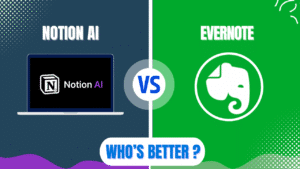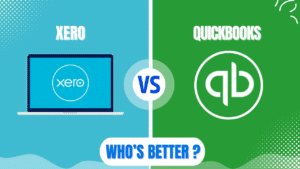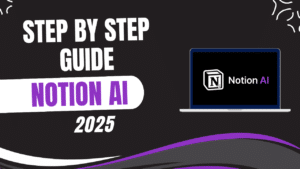I recommend Sage Business Cloud Accounting for small to medium-sized businesses seeking robust financial management with professional-grade features at an affordable price point. Sage offers exceptional multi-currency support, strong reporting capabilities, and excellent bank integration that streamlines accounting processes for business owners. However, businesses requiring advanced inventory management or complex project tracking may find the platform somewhat limiting compared to higher-tier alternatives.
Overview of Sage Business Cloud Accounting
Sage Business Cloud Accounting functions as a comprehensive cloud-based financial management solution designed specifically for small and medium-sized enterprises. The platform enables users to manage their finances efficiently through an intuitive interface accessible from anywhere with internet connectivity.
The software operates entirely in the cloud, eliminating the need for local installations or manual updates. This cloud-based approach ensures users always access the latest version with current security protections and regulatory compliance features.
Recent updates in 2025 have enhanced Sage’s functionality with improved automation features and deeper integration capabilities. These improvements strengthen its position as a leading accounting solution for modern businesses seeking professional-grade financial management.
Sage Business Cloud Accounting evolved from previous iterations known as Sage One Payroll or Ciel e-Service Payroll. The rebranding reflects the company’s commitment to cloud-based solutions that provide flexibility and accessibility for today’s business environment.
The platform consolidates essential financial functions including accounting, invoicing, expense tracking, and reporting into a cohesive system. This integration creates a streamlined workflow that reduces administrative burden and improves financial visibility.
Key Features and Capabilities
Sage Business Cloud Accounting offers a robust set of features designed to simplify financial management for small businesses. The platform’s capabilities cover essential accounting tasks while providing advanced tools for specific business needs.
Accounting and Financial Management
The system utilizes professional accounting standards with double-entry bookkeeping that satisfies compliance requirements. This accounting foundation provides credibility for tax filing and financial reporting.
Bank connections allow for automatic transaction importing and categorization, significantly reducing manual data entry. The system learns from previous categorizations to improve accuracy over time.
Multi-currency support enables businesses to operate internationally with over 30 currencies supported. This feature proves particularly valuable for companies with global clients or suppliers.
| Accounting Feature | Capability | Benefit |
|---|---|---|
| Double-Entry System | Professional accounting standards | Accurate financial records |
| Bank Connections | Automatic transaction importing | Reduced manual entry |
| Multi-Currency | Support for 30+ currencies | Simplified global operations |
| Financial Reports | Comprehensive reporting suite | Enhanced decision-making |
| Tax Compliance | Automatic updates for regulations | Reduced compliance risk |
Invoicing and Payment Processing
Sage excels at professional invoicing with customizable templates that maintain brand consistency. The system allows users to create and send invoices quickly with options for tracking payment status.
Quotation and estimation tools enable businesses to create professional proposals that can convert directly to invoices when approved. This seamless conversion eliminates duplicate data entry and streamlines the sales process.
Payment processing options facilitate faster collections through integrated online payment capabilities. This feature helps improve cash flow by reducing the time between invoicing and payment receipt.
Expense and Project Management
Expense tracking features allow for comprehensive monitoring of business spending with customizable categories. This organization simplifies tax preparation and financial analysis.
Project tracking functionality monitors performance of specific business areas using Analysis Codes. Businesses can track different locations, divisions, or projects to compare performance and profitability.
Budgeting tools help businesses set financial targets and monitor performance against those goals. Users can create budgets from scratch or base them on historical data for more accurate forecasting.
Reporting and Analytics
Sage provides robust reporting capabilities with various data visualization tools including charts, curves, and diagrams. These visual representations make financial data more accessible to non-financial team members.
Real-time dashboards present key financial metrics in an easily digestible format. This immediate visibility helps business owners make informed decisions based on current financial status.
Customizable reports allow users to focus on specific aspects of their business performance. This flexibility ensures businesses can generate the exact financial insights needed for their unique requirements.
Pricing Structure
Sage Business Cloud Accounting offers a tiered pricing model designed to accommodate businesses at different stages of growth. The pricing structure provides flexibility while maintaining access to core features across all plans.
The Start plan costs approximately $10 per month and targets very small businesses and freelancers. This entry-level option provides essential features for basic accounting needs.
The Standard plan offers expanded capabilities for growing businesses at a moderate price point. This mid-tier option includes additional features like multi-currency support and enhanced reporting.
| Plan | Monthly Price | Key Features | Best For |
|---|---|---|---|
| Start | $10/month | Basic accounting, invoicing | Freelancers, startups |
| Standard | Higher | Multi-currency, advanced reporting | Growing SMBs |
| Plus | Premium | Project tracking, inventory | Established businesses |
| Free Trial | 30 days | Full feature access | Evaluation period |
All plans include core accounting features, though more advanced capabilities like project tracking may require higher-tier subscriptions. This tiered approach allows businesses to select the appropriate level for their specific needs.
The pricing structure remains competitive within the accounting software market, particularly when considering the professional-grade features included. Sage offers good value compared to both budget alternatives and enterprise-level solutions.
A 30-day free trial allows potential users to test the platform before committing to a subscription. This risk-free evaluation period provides ample time to assess Sage’s suitability for specific business requirements.
User Experience and Interface
Sage Business Cloud Accounting delivers a clean, intuitive interface designed for users of varying technical abilities. The dashboard presents key financial information in an easily digestible format.
Navigation follows a logical structure with clearly labeled sections for different financial functions. This organization helps users quickly locate needed features without extensive searching.
The system uses straightforward terminology that makes accounting concepts accessible to non-accountants. This approach reduces the learning curve for business owners without financial backgrounds.
Mobile accessibility through dedicated applications allows users to manage finances on the go. These apps provide core functionality including invoice creation, expense tracking, and financial overview.
Collaboration features enable multiple team members to work simultaneously while maintaining data security. This multi-user capability facilitates teamwork between internal staff and external accountants.
The platform supports multiple languages, making it accessible to diverse global teams. This internationalization enhances usability for multinational organizations or businesses operating in multilingual regions.
Sage vs. Competitors
When comparing Sage Business Cloud Accounting to alternatives, several key differences emerge that may influence the decision for potential users. These distinctions help determine which platform best suits specific business needs.
Sage vs. QuickBooks
QuickBooks offers more extensive inventory management features compared to Sage’s more basic inventory tracking. This difference may impact product-based businesses with complex inventory requirements.
Sage provides stronger multi-currency support with over 30 currencies, making it more suitable for international businesses. QuickBooks offers more limited international capabilities on its comparable pricing tiers.
| Feature | Sage Business Cloud | QuickBooks Online | Xero | Wave |
|---|---|---|---|---|
| Starting Price | $10/month | $30/month | $13/month | Free (core) |
| Multi-Currency | 30+ currencies | Limited | 160+ currencies | Limited |
| Inventory | Basic | Advanced | Good | None |
| Reporting | Strong | Extensive | Extensive | Basic |
| Bank Connections | Excellent | Good | Excellent | Good |
| Free Trial | 30 days | 30 days | 30 days | Always free |
Sage vs. Xero
Xero offers more extensive third-party integrations through its app marketplace compared to Sage’s more limited ecosystem. This difference affects businesses requiring specialized connections to other software systems.
| Feature | Sage | Xero |
|---|---|---|
| Third-party Integrations | Limited ecosystem | Extensive app marketplace (1000+ apps) |
| User Interface | More intuitive for beginners | More customization for advanced users |
| Target Market | SMBs to larger enterprises | Small businesses, sole traders |
| Pricing | £10-30/month (basic), custom for enterprise | £10-30/month |
| Key Capabilities | Advanced financial controls, manufacturing support | Cloud-first, real-time cash flow tracking |
| Ideal For | Complex financial operations, manufacturing | Digital-first operations, integration-focused businesses |
Sage vs. Wave
Wave offers core accounting features for free, while Sage requires a subscription for all functionality. This pricing difference significantly impacts very small businesses with limited budgets.
| Feature | Sage | Wave |
|---|---|---|
| Pricing | Subscription-based | Core features free |
| Feature Set | Comprehensive, including project tracking | Basic functionality |
| Multi-currency Support | Available | Limited |
| Target Market | SMBs to larger enterprises | Very small businesses, freelancers |
| Scalability | Highly scalable | Limited scalability |
| Customization | More customizable | Less customizable |
Advantages for Small Businesses
Sage Business Cloud Accounting provides several specific benefits that address common challenges faced by small businesses. These advantages help explain the platform’s popularity among SMEs.
Time-Saving Automation
Automated data entry for accounting transactions and bank reconciliation reduces manual workload. This automation saves valuable time that can be redirected toward core business activities.
The system’s ability to learn from previous entries improves categorization accuracy over time. This machine learning capability progressively reduces the need for manual intervention.
Recurring transaction templates streamline repetitive financial tasks like regular invoicing or bill payments. This feature ensures consistency while minimizing administrative effort.
Financial Visibility and Control
Real-time financial dashboards provide immediate insight into business performance. This visibility helps owners identify trends or issues requiring attention before they become problematic.
Cash flow forecasting tools help businesses anticipate future financial positions. This foresight enables better planning for expenses, investments, and potential cash shortfalls.
Budget comparison reports track actual performance against financial targets. These comparisons help businesses understand variances and adjust strategies accordingly.
| Advantage | Implementation | Business Impact |
|---|---|---|
| Time Savings | Automated data entry, reconciliation | Reduced administrative burden |
| Financial Clarity | Real-time dashboards, reports | Better decision-making |
| Compliance | Automatic tax updates, proper accounting | Reduced regulatory risk |
| Collaboration | Multi-user access, accountant sharing | Improved teamwork |
| Accessibility | Cloud-based, mobile apps | Work from anywhere |
Compliance and Accuracy
Automatic updates reflect the latest regulatory changes, ensuring businesses remain compliant. This feature is particularly valuable given the frequent changes in tax and accounting requirements.
Double-entry accounting principles maintain proper financial records that satisfy professional standards. This accounting foundation provides confidence during audits or financial reviews.
Built-in validation checks help identify potential errors before they impact financial statements. This proactive approach improves overall accuracy and reduces correction efforts.
Limitations and Considerations
While Sage Business Cloud Accounting offers impressive capabilities, certain limitations may impact its suitability for some businesses. Understanding these constraints helps set appropriate expectations.
Feature Limitations
Inventory management capabilities remain basic compared to specialized inventory systems. Businesses with complex product tracking needs may require additional solutions.
Advanced project management features are limited to higher-tier plans and lack the depth of dedicated project management software. This limitation may affect service-based businesses with complex project requirements.
Customization options for reports and forms, while good, don’t match the flexibility of enterprise-level accounting systems. Businesses requiring highly specialized reporting may find these constraints challenging.
| Limitation | Impact | Business Type Affected |
|---|---|---|
| Basic Inventory | Limited product tracking | Retail, manufacturing |
| Project Management | Simplified tracking only | Service businesses, agencies |
| Customization | Some reporting constraints | Businesses with unique requirements |
| Learning Curve | Initial setup time | New businesses, non-accountants |
| Integration Limits | Fewer third-party connections | Businesses with specialized software |
Technical Considerations
Internet dependency means the system requires reliable connectivity for access. Businesses in areas with inconsistent internet service may experience accessibility issues.
Data migration from legacy systems can present challenges during initial setup. This transition period may require additional effort or professional assistance.
Performance may vary based on the volume of transactions and complexity of operations. Very high-volume businesses might experience slower processing during peak periods.
My Opinion on Sage Business Cloud Accounting
After thoroughly analyzing Sage Business Cloud Accounting’s features, capabilities, and user experiences, I find it offers excellent value for small to medium-sized businesses seeking professional financial management without enterprise-level costs. The platform successfully balances functionality with usability, making accounting accessible to business owners without specialized financial backgrounds.
Sage’s strongest features include its intuitive interface, robust reporting capabilities, and strong multi-currency support. These elements combine to create a solution that handles core accounting needs efficiently while providing valuable insights for business decision-making.
The platform’s automation capabilities represent a significant advantage, particularly for time-constrained small business owners. Features like automated bank feeds, recurring transactions, and intelligent categorization substantially reduce the administrative burden of financial management.
For businesses operating internationally, Sage’s multi-currency support provides a compelling advantage over many competitors at similar price points. The ability to handle over 30 currencies simplifies global operations and improves financial accuracy across different markets.
The tiered pricing structure offers good flexibility, allowing businesses to start with essential features and upgrade as their needs evolve. This scalability ensures Sage can accommodate business growth without requiring a platform change.
However, businesses with complex inventory requirements or specialized industry needs may find Sage somewhat limiting. The platform prioritizes general accounting excellence over depth in specific operational areas, which may necessitate additional solutions for some businesses.
Overall, Sage Business Cloud Accounting represents an excellent choice for most small to medium businesses seeking professional-grade financial management without the complexity or cost of enterprise systems. The platform delivers on its promise of simplifying accounting while maintaining the robust capabilities needed for proper financial management.
FAQ
Q: Is Sage Business Cloud Accounting suitable for my small business?
A: Sage Business Cloud Accounting is specifically designed for small to medium-sized businesses, freelancers, contractors, and self-employed professionals. The platform works particularly well for service-based businesses, consultants, and companies with international clients due to its strong multi-currency support. Businesses with basic inventory needs will find adequate functionality, though companies with complex inventory management requirements may need additional solutions. The software’s flexibility allows it to adapt to various business types, making it suitable for most small businesses seeking professional financial management.
Q: How does Sage Business Cloud Accounting compare to QuickBooks in terms of features and pricing?
A: Sage Business Cloud Accounting offers more affordable starting prices (approximately $10/month) compared to QuickBooks Online (starting around $30/month). Sage provides stronger multi-currency support with over 30 currencies, while QuickBooks offers more advanced inventory management and slightly more extensive reporting options. Both platforms offer bank connectivity and mobile apps, but QuickBooks has a larger third-party app ecosystem. Sage generally provides a more intuitive interface for beginners, while QuickBooks offers more customization options for advanced users. The best choice depends on your specific needs, with Sage offering better value for international businesses and QuickBooks excelling for inventory-heavy operations.
Q: What are the key benefits of using Sage Business Cloud Accounting?
A: Key benefits include significant time savings through automation of data entry and reconciliation processes, improved financial visibility with real-time dashboards and comprehensive reporting, enhanced compliance through automatic regulatory updates, better collaboration with multi-user access and accountant sharing capabilities, and complete accessibility via cloud-based and mobile platforms. Additional advantages include professional invoicing features, strong multi-currency support for international business, budgeting tools for financial planning, and project tracking capabilities to monitor performance across different business segments. These benefits combine to reduce administrative burden while improving financial management and decision-making.
Q: Does Sage Business Cloud Accounting include payroll processing?
A: Sage offers payroll processing as an optional add-on to Sage Business Cloud Accounting rather than including it in the base subscription. The payroll module synchronizes automatically with the accounting system, creating a seamless experience for businesses that need both functions. This integration ensures that payroll expenses, taxes, and liabilities automatically reflect in your accounting records without manual data entry. The payroll add-on includes features for managing employee information, calculating taxes, processing payments, and generating required tax forms. Pricing for the payroll module is separate from the accounting subscription, allowing businesses to customize their solution based on specific needs.
Q: How easy is it to migrate from another accounting system to Sage Business Cloud Accounting?
A: Migrating to Sage Business Cloud Accounting involves a straightforward process, though complexity depends on your current system and data volume. Sage provides import tools for bringing over contacts, chart of accounts, and opening balances. The platform includes migration guides and support resources to assist with the transition. For more complex migrations, Sage partners with accounting professionals who can provide specialized assistance. Most businesses can complete basic migration within a few days, though transferring historical transaction data may require additional time or professional help. Sage recommends migrating at the start of a financial period when possible to simplify the transition process.
Q: What level of customer support does Sage provide?
A: Sage offers multiple support channels for Business Cloud Accounting users, with availability varying by subscription level. All users have access to an extensive knowledge base, community forums, and email support. Higher-tier plans include priority support with faster response times and chat capabilities. Sage also provides onboarding assistance for new users to help with initial setup and configuration. For more personalized support, Sage maintains a network of certified advisors and consultants who can provide specialized assistance. User reviews generally indicate positive experiences with Sage’s support services, though response times may vary depending on issue complexity and subscription level.
Q: Can Sage Business Cloud Accounting handle multiple currencies and international business?
A: Yes, Sage Business Cloud Accounting excels at handling multiple currencies, supporting over 30 different currencies for international transactions. The system automatically updates exchange rates and calculates currency conversions, simplifying financial management for businesses operating globally. Users can create invoices, record expenses, and generate reports in different currencies while maintaining accurate financial records in their base currency. The platform also handles foreign currency gains and losses appropriately for accounting purposes. This multi-currency capability makes Sage particularly valuable for businesses with international clients, suppliers, or operations, providing them with the tools needed to manage global financial activities efficiently.






